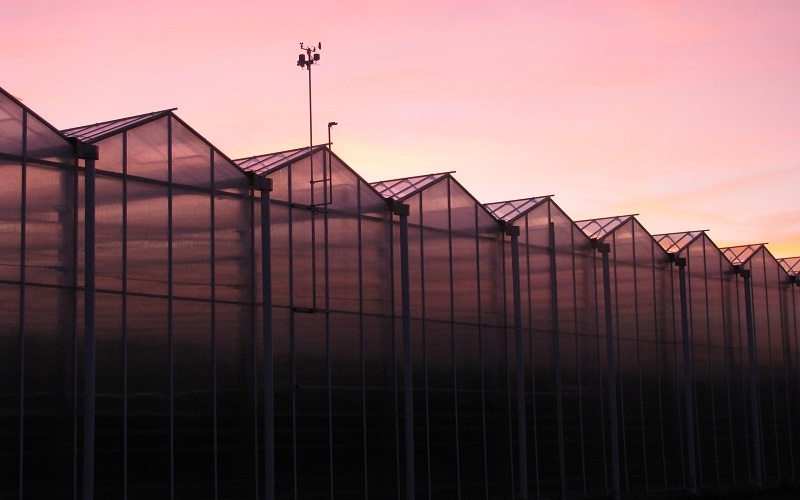While it is undoubtedly necessary to the industry as a whole, cannabis cultivation is not the greatest example of sustainability. It takes a good amount of electricity to light indoor cultivation centers, and water consumption can be difficult when attempting to grow on a large scale. This is why a company such as Hoogendoorn is so important to the cannabis industry. In this company spotlight, Cannabis & Tech Today spoke with Hoogendoorn General Manager Pieter Kwakernaak and discovered the company’s innovative approaches to sustainability and climate control.
Growth From the Start
Originally based from the Netherlands, Hoogendoorn looks to assist businesses with everything from energy and water management to maintaining a proper climate for growth and manage statistics. Hoogendoorn has been involved with the field of automation for over fifty years, generally assisting facilities that are in a state of growth. And, while the company does assist cannabis cultivators, it has experience with a large breadth of different crops and facilities.
However, the company grew into what it is today in a seemingly simple way: outfiting greenhouses that grow grapes. According to Pieter Kwakernaak, “Well, when we figured out that we can grow grapes, we also figured out to grow other fruits and vegetables in greenhouses. So that’s where the growing trick for tomatoes, peppers, and cucumbers came from.”
While the growth itself was important to the company, it’s one revelation that would change the company into what it is today and lead to one of its biggest innovations. As Kwakernaak said, “Over the years, the greenhouses became bigger and bigger. We figured out right after the second World War that we had some problems with energy. Energy and gas were very expensive so we developed a horticultural industry and energy-saving techniques. So that’s also where the thermal screen came from. That was then installed in the greenhouses and required proper controls.”
The Balanced Approach
The company’s growth eventually led them to the burgeoning cannabis industry overseas. However, it wasn’t the easiest move, as there was still skepticism stemming from the complete illegality of cannabis cultivation in the Netherlands. Nevertheless, the company embraced the sector in the U.S. and Canada, both in outdoor and indoor growing. This has given Hoogendoorn the opportunity to show off their advanced methods in a fairly new, lucrative business landscape.
Part of the reason for the company’s success has been their focus on a “balanced” approach to growth. Kwakernaak explained the process in depth for our readers:
“The plants, during the day, need CO2 for optimal growth. So we actually use a boiler to provide plants with CO2 during the day. But the energy and the heat is not needed during the day, so with the right conserve equipment, you can actually store the energy from the boiler in a big storage tank, a hot water silo. And that will be then used during the night, when there is no CO2 needed but just heat.
“Then during the night, the hot water will be pumped through the facility to keep the temperature up. You also need to prevent crop condensation, which also in cannabis is a very, very important topic. Prevent crop condensation.
“Crop condensation occurs in greenhouses when the temperature is relatively low in the morning and the temperature in the facility heats up too quick. So then you get the same situation as grabbing a cold beer out of the fridge, when you put it on the countertop. It gets wet and there’s nothing you can do about it because the bottle is wet and the surrounding air is then releasing the water right on the bottle.
“So that effect also happens if you have fruits and plants in the greenhouses. Fruits or dense flower warm up slower than the surrounding air. And now you see the problem that’s coming up. If the temperature rises too quick, then those dense fruits or flowers get wet. And the last thing growers want is moisture in their buds. So, with our controls, we can release in the morning hours, before sunrise, heat into the facility to prevent crop condensation.”
Taking Charge of the Climate
In addition to energy and water management, Hoogendoorn’s climate management is a major factor in their offerings. This is done through the company’s advanced computer systems, which are showcased online.
Kwakernaak explained Hoogendoorn’s advanced management system and how it can be used for all types of crops:
“Our computers collect climate data, collect all the water and energy data. And we store that in the computer for two years. And we can also connect to the online platform, www.letsgrow.com. On this platform, that information can be analyzed and provide recommendations on how to further improve your climate.
“This is done to increase crop production and quality, but also to make it very easy for the owner of the data and the owner of the grow to share that with his or her perspective crop consultants. Or, if you have multiple locations, you compare multiple locations to see where things can be improved.”
Needless to say, with Hoogendoorn’s newfound focus on cannabis and proven climate and growing skills, they definitely look to be a major growing force within the industry.
Make sure to check out the official Hoogendoorn website for additional information and view the digital platform at www.letsgrow.com.
Featured image courtesy of Hoodendoorn.






